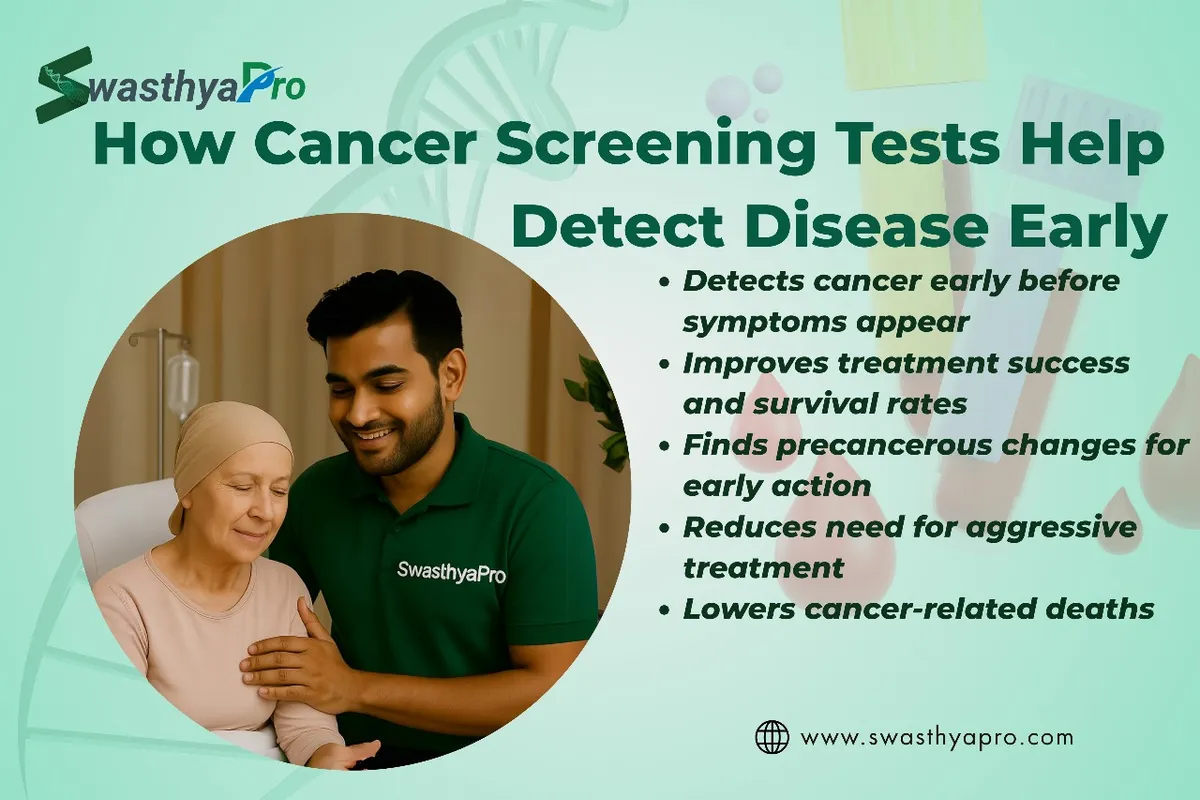What to Expect During a Cancer Screening Test: A Step-by-Step Guide

Going in for a Cancer Screening Test? You might feel nervous, unsure, or even scared. That’s completely normal. But the truth is, most Cancer Screening Tests are quick, simple, and far less intimidating than they sound. And the best part? They could help detect cancer early — when it’s easiest to treat.
This step-by-step guide will walk you through what actually happens during a Cancer Screening Test, so you can walk in informed and walk out empowered.
Step 1: Booking Your Appointment
The first step is to talk to your doctor. Based on your age, gender, family history, and lifestyle, they’ll recommend the right Cancer Screening Tests for you. You might be referred for a mammogram, colonoscopy, Pap smear, or other types of tests.
You can also ask about where to get the test, how to prepare, and what the costs might be. Many hospitals and clinics offer these Cancer Screening Tests at affordable rates or even free during health drives.
Step 2: Preparing for the Test
Preparation depends on the type of Cancer Screening Test:
- Mammogram: Avoid deodorants or powders before the test as they can affect the X-ray image.
- Colonoscopy: You’ll likely need to fast and take a cleansing liquid to empty your bowels.
- Pap Smear: Avoid sexual activity, douching, or using vaginal creams for at least 48 hours before.
- PSA Blood Test: No specific prep, just a simple blood draw.
- Low-Dose CT (Lung Cancer): No food or drink restrictions; just remove any metal objects before the scan.
Ask your doctor if there's anything specific you should or shouldn’t do before your Cancer Screening Test.
Step 3: The Test Itself
Here’s what to expect from some of the most common Cancer Screening Tests:
- Mammogram: You’ll stand in front of an X-ray machine. Your breast will be gently pressed between two plates for a few seconds. It may feel a little uncomfortable, but not painful.
- Pap Smear: While lying down, a small tool is used to collect cells from your cervix. It takes just a few minutes.
- Colonoscopy: You’ll be given sedation. A thin tube with a camera is inserted into your rectum to look at your colon. It sounds scary, but you’ll be asleep or relaxed.
- Low-Dose CT scan: You lie down on a table that moves through a scanner. It’s painless and takes about 10–15 minutes.
- PSA Test: Just a routine blood sample.
Most Cancer Screening Tests are over in less than 30 minutes.
Step 4: After the Test
- You can go home right after most Cancer Screening Tests.
- If you had sedation (like in a colonoscopy), you’ll need someone to drive you home.
- Your doctor will let you know when your results will be ready — usually within a few days to a week.
Step 5: Understanding the Results
If your results are normal, you’ll simply repeat the Cancer Screening Test as recommended (e.g., every 1, 3, or 5 years).
If something unusual is found, it doesn’t always mean cancer. You may just need further tests to understand it better.
Stay calm, stay informed, and talk to your doctor.
Getting a Cancer Screening Test may feel intimidating at first — but once you know what to expect, it becomes just another smart choice for your health. These tests are designed to keep you ahead of the problem, not behind it.
Early testing = better chances. So don’t let fear delay your decision. Your body, your peace of mind, and your future will thank you.